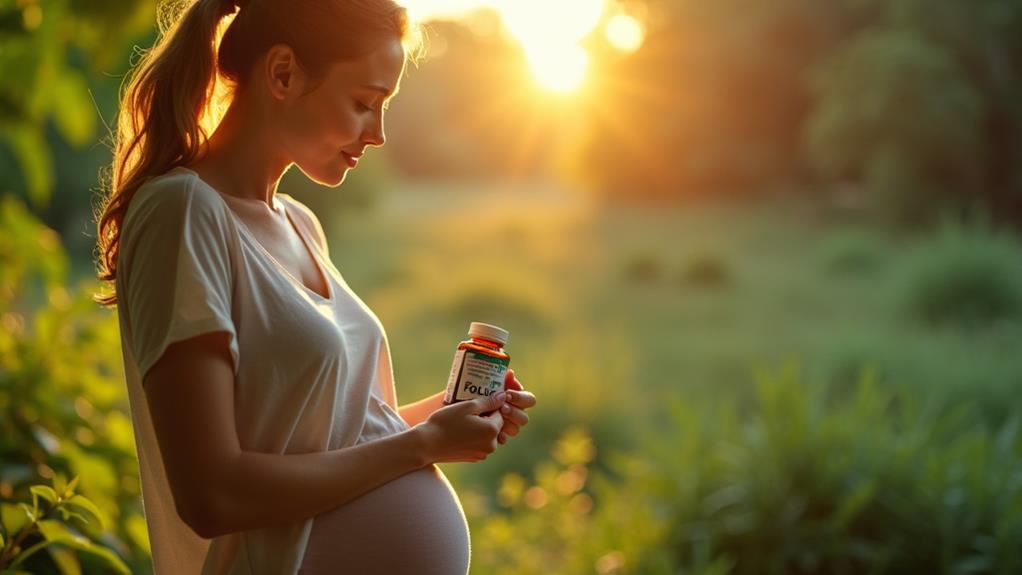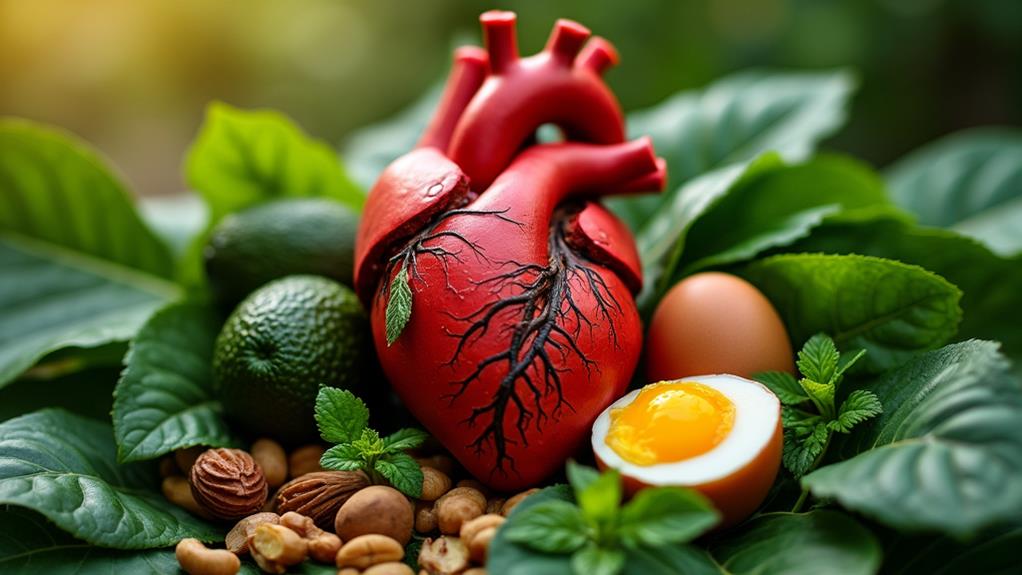







It’s always important to take care of your health, and part of that includes knowing the right balance of vitamins and nutrients your body needs. Vitamin E is often praised for its antioxidant properties, helping to protect your cells from damage. But is it possible to have too much of a good thing? In this article, we will explore the potential risks and side effects of consuming excessive amounts of vitamin E, allowing you to make informed decisions about your daily intake. So, let’s dive into the world of vitamin E and discover how much is too much.
What is Vitamin E?
Definition of Vitamin E
Vitamin E is a group of fat-soluble compounds that function as antioxidants in the body. It is essential for the proper functioning of many organs and helps protect cell membranes from damage caused by harmful free radicals. The most active and abundant form of vitamin E is alpha-tocopherol. Vitamin E is important for maintaining overall health and well-being.
Types of Vitamin E
There are eight different forms of vitamin E, known as tocopherols and tocotrienols. Each form has unique antioxidant properties and biological activities. The most common and biologically active form of vitamin E is alpha-tocopherol, which is commonly found in supplements and fortified foods. Other forms include beta-tocopherol, gamma-tocopherol, and delta-tocopherol.
Sources of Vitamin E
Vitamin E can be obtained through a variety of dietary sources. Good food sources of vitamin E include nuts and seeds (such as almonds, sunflower seeds, and peanuts), vegetable oils (such as sunflower oil and olive oil), green leafy vegetables (such as spinach and broccoli), and fortified cereals. It is important to incorporate these sources into your daily diet to ensure an adequate intake of vitamin E.
Recommended Daily Allowance (RDA)
RDA for Different Age Groups
The recommended daily allowance (RDA) for vitamin E varies depending on age. For adults, the RDA is 15 milligrams (22.4 International Units) per day. Infants, children, and teenagers have lower RDAs ranging from 4-11 milligrams (5.96-16.37 International Units) per day, depending on their age. It is important to meet these recommended values to support overall health and well-being.
RDA for Pregnant and Lactating Women
During pregnancy and lactation, the RDA for vitamin E increases. Pregnant women are advised to consume 15 milligrams (22.4 International Units) of vitamin E per day, while lactating women are recommended to consume 19 milligrams (28.3 International Units) per day. Adequate vitamin E intake during these stages is crucial for the development and well-being of both the mother and the baby.
RDA for Athletes and Active Individuals
Athletes and individuals who engage in regular physical activity may have slightly higher vitamin E requirements due to increased oxidative stress placed on the body. It is generally recommended for athletes and active individuals to aim for an intake of 15-30 milligrams (22.4-44.8 International Units) of vitamin E per day to support their increased energy expenditure and overall health.
Health Benefits of Vitamin E
Antioxidant Effects
One of the primary functions of vitamin E is its role as an antioxidant. It helps neutralize harmful free radicals in the body, reducing oxidative stress and preventing cellular damage. This antioxidant effect of vitamin E may help protect against chronic diseases such as heart disease, cancer, and neurodegenerative disorders.
Promotes Eye Health
Vitamin E is beneficial for maintaining good eye health. It helps protect the cells of the eyes from oxidative damage caused by free radicals, reducing the risk of conditions such as age-related macular degeneration and cataracts. Adequate intake of vitamin E can contribute to maintaining clear vision and overall eye health.
Boosts Immune System
Vitamin E plays a crucial role in supporting a strong immune system. It helps regulate immune cell function and enhances the body’s ability to fight off infections and diseases. By maintaining adequate levels of vitamin E, you can help support a robust immune system and reduce the risk of falling ill.
Supports Skin Health
Vitamin E is often used in skincare products due to its moisturizing and healing properties. It helps nourish the skin, improve skin elasticity, and reduce the signs of aging. Consuming an adequate amount of vitamin E can contribute to healthy, glowing skin by protecting it from oxidative damage and promoting the growth of new cells.
Protects Against Chronic Diseases
Numerous studies have shown that vitamin E may play a role in reducing the risk of chronic diseases. It has been associated with a lower risk of heart disease, certain types of cancer, and neurodegenerative disorders such as Alzheimer’s disease. Incorporating vitamin E-rich foods into your diet may be beneficial for long-term health and disease prevention.
Potential Risks of Excessive Vitamin E Intake
Hypervitaminosis E
Excessive intake of vitamin E can lead to a condition called hypervitaminosis E. It is characterized by symptoms such as nausea, vomiting, fatigue, and blurred vision. It is important to consume vitamin E within the recommended daily allowance to avoid the risk of hypervitaminosis E.
Interference with Blood Clotting
High doses of vitamin E can interfere with blood clotting mechanisms in the body, increasing the risk of bleeding. This can be especially problematic for individuals taking blood-thinning medications or those with pre-existing bleeding disorders. It is essential to consult with a healthcare professional before taking high-dose vitamin E supplements.
Digestive Issues
Excessive intake of vitamin E can cause digestive issues such as diarrhea, stomach cramps, and nausea. These symptoms may occur due to the body’s inability to absorb and process high levels of the vitamin. It is important to consume vitamin E within the recommended daily limits to prevent digestive discomfort.
Increase in Prostate Cancer Risk
Some studies have suggested that high doses of vitamin E supplements may increase the risk of developing prostate cancer in men. However, more research is needed to establish a definitive link between vitamin E intake and prostate cancer. It is advisable to discuss any concerns with a healthcare professional.
Possible Toxicity in High Doses
Vitamin E is generally considered safe when consumed in appropriate doses, but high doses can be toxic. Symptoms of vitamin E toxicity include headaches, fatigue, and blurred vision. It is essential to follow the tolerable upper intake levels (UL) guidelines to avoid the risk of toxicity.
Tolerable Upper Intake Levels (UL)
UL for Different Age Groups
The tolerable upper intake level (UL) for vitamin E varies depending on age. For adults, the UL is set at 1,000 milligrams (1,490 International Units) per day. Children and teenagers have lower ULs ranging from 200-550 milligrams (298-820 International Units) per day, depending on their age. It is crucial to stay within these upper limits to prevent the risk of toxicity.
UL for Pregnant and Lactating Women
Pregnant and lactating women have a higher UL compared to non-pregnant adults. The UL for these women is set at 1,200 milligrams (1,789 International Units) per day. It is important for pregnant and lactating women to be mindful of their vitamin E intake and not exceed the recommended UL to avoid potential risks.
UL for Athletes and Active Individuals
There is no specific UL for athletes and active individuals, but it is important to stay within the UL set for adults. The general UL of 1,000 milligrams (1,490 International Units) per day applies to individuals engaged in regular physical activity. It is essential to prioritize moderation and consult with a healthcare professional for personalized guidance.
Symptoms of Vitamin E Toxicity
Nausea and Vomiting
Excessive intake of vitamin E can lead to nausea and vomiting. These symptoms may occur due to the body’s inability to process and eliminate high levels of the vitamin. It is important to be aware of these symptoms and consult with a healthcare professional if they persist or worsen.
Diarrhea
Diarrhea is another common symptom of vitamin E toxicity. It can occur when the body is unable to absorb and utilize excessive amounts of the vitamin. If you experience persistent or severe diarrhea, it is advisable to seek medical advice.
Headache
Headaches can be a sign of vitamin E toxicity. High doses of the vitamin can cause changes in blood vessel function, leading to headache symptoms. If you experience recurring headaches, it is important to consult with a healthcare professional to determine the underlying cause.
Fatigue
Excessive intake of vitamin E can cause fatigue and general tiredness. This may be due to the body’s metabolic processes being disrupted by high levels of the vitamin. If you find yourself constantly fatigued, it is recommended to speak with a healthcare professional for proper evaluation.
Blurred Vision
Blurred vision is a potential symptom of vitamin E toxicity. High doses of the vitamin can affect blood vessel function and lead to visual disturbances. If you experience persistent or worsening blurred vision, it is essential to consult with an eye specialist or healthcare professional.
Factors Affecting Tolerability of Vitamin E
Individual Variations
Each individual may have different tolerability levels for vitamin E. Factors such as age, overall health, and genetic variations can impact how the body processes and utilizes the vitamin. It is important to be aware of any personal sensitivities or reactions to vitamin E and adjust intake accordingly.
Interaction with Other Nutrients
Vitamin E interacts with other nutrients in the body, and deficiencies in certain nutrients can affect its absorption and utilization. Adequate levels of vitamins such as vitamin C and selenium are important for optimal vitamin E function. Maintaining a balanced and varied diet that includes a wide range of nutrients is crucial for maximizing the benefits of vitamin E.
Underlying Health Conditions
Certain health conditions may affect the tolerability of vitamin E. For example, individuals with liver or gallbladder disorders may have difficulties absorbing fat-soluble vitamins like vitamin E. It is important to consult with a healthcare professional if you have any pre-existing health conditions that may impact your ability to process vitamin E.
Medication Interactions
Vitamin E can interact with certain medications, affecting their effectiveness or increasing the risk of side effects. For example, vitamin E can interact with blood-thinning medications and increase the risk of bleeding. It is important to inform your healthcare professional about any medications you are taking to avoid potential interactions and complications.
Diagnosis and Treatment of Vitamin E Toxicity
Blood Tests
Diagnosis of vitamin E toxicity can be made through blood tests. These tests measure the levels of vitamin E in the blood and can help determine if the levels are within the normal range or if toxicity is present. Blood tests may also be used to assess other potential complications or imbalances related to excessive vitamin E intake.
Symptom Management
To manage the symptoms of vitamin E toxicity, it is important to discontinue the intake of excessive vitamin E. The body will naturally eliminate the excess vitamin E over time, and symptoms should resolve on their own. It may be necessary to manage specific symptoms, such as nausea or headache, with appropriate medications or therapies as advised by a healthcare professional.
Reducing Vitamin E Intake
To prevent further complications and promote recovery, it is crucial to reduce vitamin E intake to within the recommended daily limits. Adjusting the diet to include fewer vitamin E-rich foods and avoiding high-dose supplements is necessary to avoid excessive intake.
Medical Supervision and Advice
In cases of vitamin E toxicity, it is recommended to seek medical supervision and advice. A healthcare professional can provide personalized guidance based on individual factors and help monitor the progress and recovery from vitamin E toxicity. Regular check-ups and follow-ups may be necessary to ensure complete resolution of symptoms and prevent potential complications.
Conclusion
In conclusion, consuming an adequate amount of vitamin E is important for overall health and well-being. It acts as a powerful antioxidant, supports eye health, boosts the immune system, promotes skin health, and protects against chronic diseases. However, excessive intake of vitamin E can lead to potential risks such as hypervitaminosis E, interference with blood clotting, digestive issues, increased prostate cancer risk, and possible toxicity. It is important to stay within the recommended daily allowance and consult with healthcare professionals for personalized advice and guidance. Moderation, balanced diet, and regular monitoring are key factors in maintaining optimal vitamin E levels and minimizing the risk of complications.




